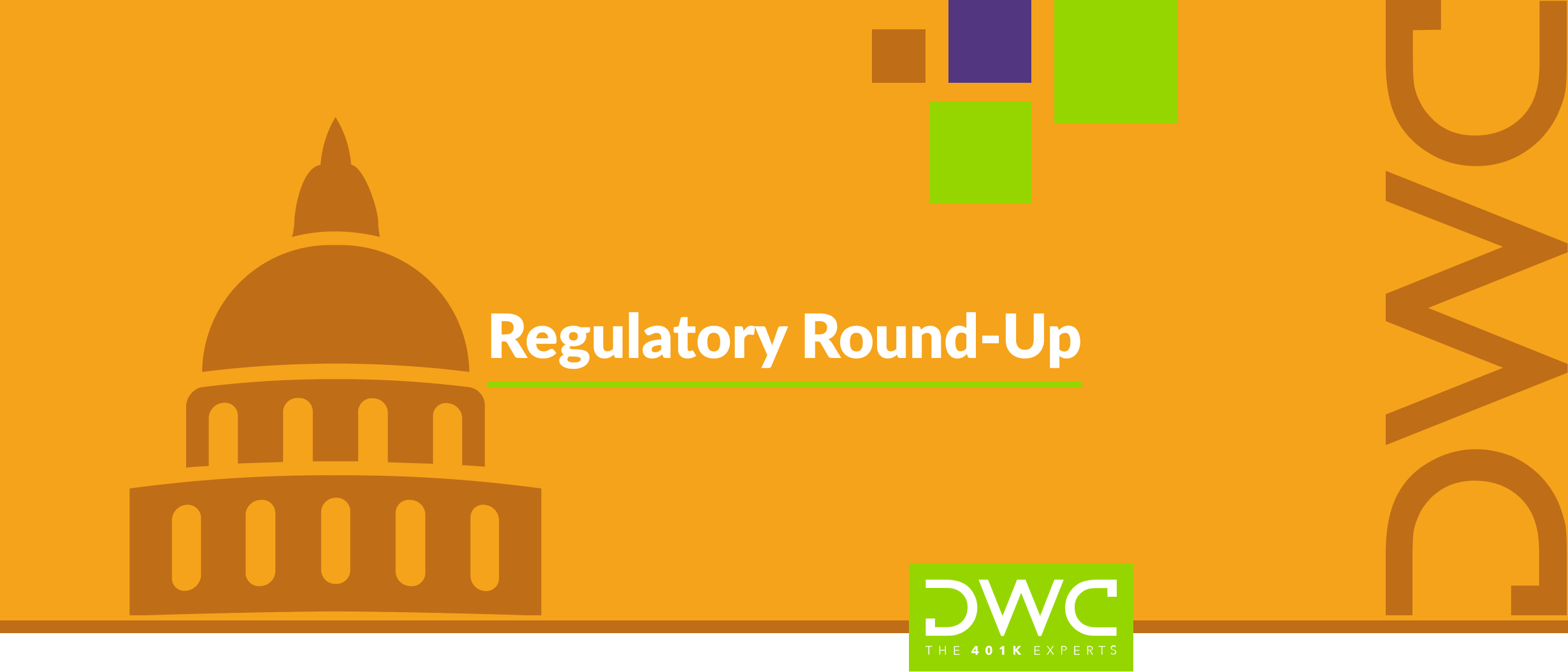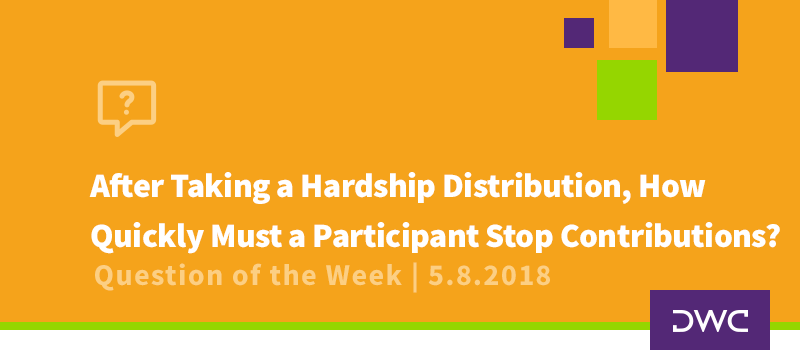
Can We Suspend our Safe Harbor Contribution Mid-Plan Year?
Facts
Given the current uncertainty in the world economy and the unknown ongoing affects of coronavirus, I’m looking at all financial obligations for our company, and for opportunities to reduce risk. We currently sponsor a 401(k) plan for our employees and provide a safe harbor contribution equal to 3% of employee compensation.
Question
Although we communicated the safe harbor contribution to participants prior to the start of the year, is there any option to stop the contribution now, mid-year?
Answer
First, we understand. In uncertain times when you’re looking to make financial decisions that both keep your business afloat and your employees protected, guaranteed retirement plan contributions may fall to the bottom of the priority list. Second, this QOTW is based on the rules currently in place, but it’s entirely possible that relief in some shape may be issued in the coming weeks. If / when other options become available, we’ll pass along that information as quickly as possible.
Removing Safe Harbor
The easy part first - as plan sponsor, you can amend the plan document to remove the safe harbor provision. This is true whether your plan uses the safe harbor non-elective or safe harbor matching provision. To do so, the rules require that you distribute a notice to all employees who are eligible for the plan 30 days ahead of the change and to give them the option to alter their deferral elections during this time as well.
Important Considerations
If you have decided that removing the safe harbor provision may be the best solution for you, we are happy to assist with the amendments and required notices. In fact, we are waiving the normal amendment fee for any requests we receive through May 31, 2020 (at least).
With that said, there are a few really important caveats we must pass along. After all, no one needs more unpleasant surprises these days!
Funding Year-to-Date Contributions
Under current law, you are still required to fund the safe harbor for the period from the start of the year through the date the safe harbor removal becomes effective, e.g. 30 days after participant notice is given. For example, if you provide a notice on April 1, 2020 indicating the safe harbor will cease on May 1, 2020, the safe harbor contribution will be calculated on eligible wages and deferrals from January 1 through April 30, 2020.
However, you may be able to minimize the immediate impact of this requirement by postponing the actual deposit. In order to take a tax deduction for the contribution, you must make the deposit by the due date (with extensions) of the company tax return for this year. If your company is on a calendar tax year and you extend the 2020 return, that could be as late as September or October of 2021. If you are not concerned about the tax deduction, then you have until December 31, 2021 to deposit the 2020 safe harbor contribution.
There is one additional note of caution with regard to deposit timing. If your plan has a safe harbor matching contribution that is required to be calculated on some period other than the full year, e.g. each pay period, the deposit deadline is accelerated to the end of the quarter following the quarter to which the match relates. That means any contributions accrued through March 31, 2020, would have to be deposited no later than June 30, 2020. If the safe harbor match is calculated annually, then the deposit timing described above applies. Keep in mind that this is based on what the plan document requires, not necessarily how you are operating the plan. For instance, many plans specify that the match is based on annual compensation and deferrals; however, the company operationally chooses to make deposits each pay period. In this case, it would be an annual match with the extended deposit deadline even though the company is operationally making deposits more frequently.
If you presently have a pay period safe harbor match, you can amend it to be an annual match so that you have additional time to make the deposits. However, that change must be made retroactive to the first of the year, which may result in true-up amounts for anyone who may have front loaded their deferrals.
Loss of Top-Heavy Exemption
If your plan is top heavy, discontinuing the safe harbor provision means the plan loses its exemption from the top-heavy rules. This means all eligible participants who are employed as of the last day of the plan year will receive an employer contribution equal to the lessor of 3% of annual compensation or the highest rate of benefit received by a key employee. If no key employees have deferred into the plan or received an employer contribution during the year, the minimum required contribution is zero, so no sweat. However, if key employees have been contributing during the year, this could result in a required contribution equal to 3% of wages for all eligible participants. Since the desire to discontinue safe harbor contributions is typically tied to a desire to reduce employer costs, a review of the plan’s top heavy status and year-to-date contributions is an integral step in the decision-making process.
As with the year-to-date safe harbor contributions described above, you do have some reprieve in terms of the deadline to make any required top-heavy contribution. The same timing rules apply for deduction purposes, and the outside compliance-related deadline to deposit a 2020 top-heavy contribution is December 31, 2021 (for calendar year plans).
ADP/ACP Testing
With the removal of safe harbor, the plan will also become subject to ADP/ACP Non-Discrimination Testing. Although this may not be the biggest concern right now, it’s worth mentioning that this testing limits the amount that highly compensated employees (HCEs) can defer based on the average deferral rate for non-HCEs. In the event the plan fails the ADP/ACP tests, you may have to make corrective refunds.
Adding Back the Safe Harbor
When things turnaround and we find ourselves in the new “normal,” you might want to add the safe harbor provision back to your plan. With the added flexibility available via SECURE Act, it is possible to amend your plan document to add safe harbor non-elective provisions during the plan year (as opposed to waiting for the next plan year to begin). In fact, it’s even possible to add safe harbor non-elective provisions to the plan after the year-end. That means you can amend the plan to remove the safe harbor now, and if your financial situation allows, amend again to retroactively add back the safe harbor provision for 2020 as long as you do so by December 31, 2021. Granted these types of decisions may seem far away, but for more details on these options, click here.
We recognize and appreciate that everyone is navigating uncharted territory here. We want to ensure that plan sponsors are well-informed about their options but also potential costs or requirements that may apply upon removal of a safe harbor provision. The DWC team is always available to review the specific impacts as they apply to your plan. If we can remove at least one stressor these days, we’re happy to do it!
For more information on safe harbor 401(k) plans, please visit our Knowledge Center here. Please also visit our FAQ - Coronavirus: The Impact on Retirement Plans.
Want a printable version of this article? Click here.


















